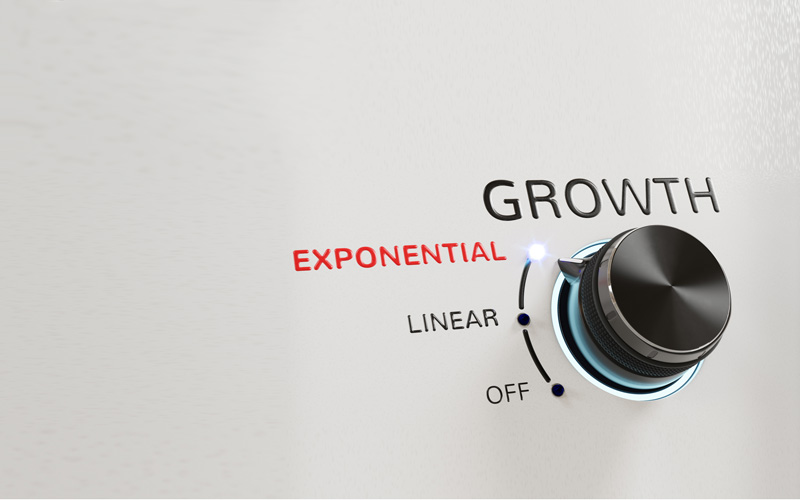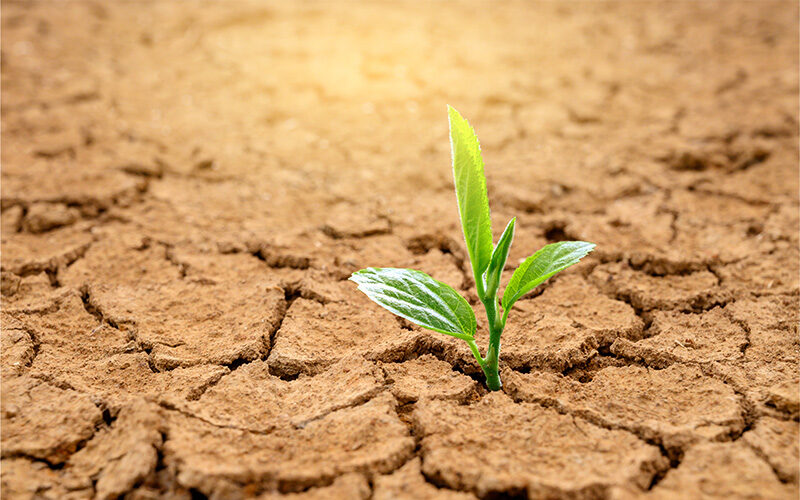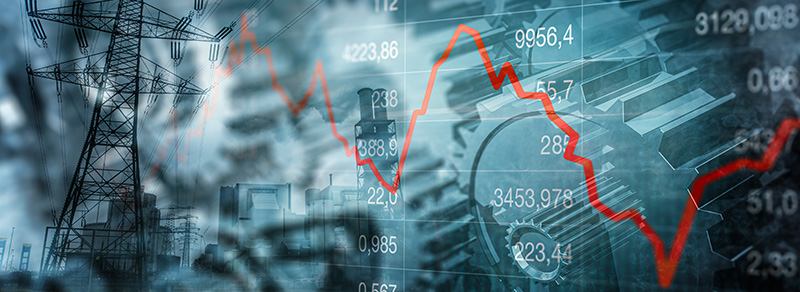The mega-forces shaping the future
We are all aware, or at least we should be, of the mega-forces shaping our future. They are numerous and selecting a ‘Top 10’ is becoming increasingly difficult. This challenge is compounded by the fact that many of these so called ‘mega-forces’ are interlinked and impacted by each other. Mega-forces exponentially impacting the world in which we live, trade, raise families, and strive to be relevant humans include Exponentiality, Demographics, Geopolitics, Abundance, Environment and Sustainability, Energy transition, Technology (from artificial intelligence to new materials and so much in between), Transparency and Surveillance, Business growth and innovation, and Leadership.
While it’s last in the list above, Leadership might be the most important of all the forces. Our future will happen. The shape and experience of that future will depend to a significant degree on global political, business, and societal leaders and their collective courage to take the decisions and execute the plans needed, skillfully and with speed, to ensure these forces deliver a future of our choosing, not one determined by chance.
Leaders, in general, have a lot to answer for when we look back with the power of hindsight. Political leaders are, to some extent, becoming less relevant given their short tenures and polarized thinking. Societal and business leaders must take the lead in designing and creating a future that coming generations will thank us for. But we get ahead of ourselves. Let’s first highlight just a few of the significant impacts of some of these mega-forces.
Exponentiality

We are living in the exponential age. Over the last 50 years we have seen more technological progress than the previous 250 years; and it’s fueled by the exponential increase in the ability to communicate and share ideas, rather than information, in real time. It’s the convergence of technologies and economic progress powering global mobility that changes the world. Never before, have we witnessed such mobility of people, goods, capital, cultures, knowledge, and ideas. Formal and informal collaboration between businesses, societies, countries, customers, interest groups, and just ordinary people, both in real life and online, has transformed the global economic, social, and political order in ways that are just beginning to be fully appreciated.
The world-wide impact of the coronavirus pandemic and the current global tensions over climate change are just two examples, while the polarization and disruption caused by the Russia-Ukraine conflict shows that no-one can be neutral or remain unaffected. As Dante, the Italian poet, writer, and philosopher famously said, “The hottest places in hell are reserved for those who, in time of moral crisis, preserve their neutrality.”
Because progress and change in many fields is exponential, rather than linear, the rate of growth or decline often catches us by surprise. Unexpected events often have second order impacts that only become predictable with hindsight. We should expect the future to be surprising and treat unexpected events and chaotic results as totally normal, if we want to benefit from and exploit the opportunities they present. Agility and a mindset that embraces change and new ideas become strategic and powerful business advantages.
Tenure of companies on the S&P500 list – the leading 500 companies, globally – is declining rapidly. This means only two things: 1) CEOs are not doing enough, fast enough, to stay relevant, and 2) new disruptive businesses are overtaking the incumbents for the same reason. From an average tenure of more than 35 years in the 1970s, it is soon expected to drop to only 10 years. The urgency is real.
Demographics – beyond the obvious

Beyond the obvious shifting societal patterns, there are other dynamic, unpredictable forces shaping our future. Population trends show us European countries will plateau and, in some cases, even decline. China and Japan are rapidly aging and do not have enough births to support the future workforce. India has become the most populous country in the world and has already joined the top five largest economies. India has the potential to bridge the deepening divide between the West and the global South, with the US-China rivalry in sharp focus. Africa continues to grow its population, sadly without equivalent economic growth.
We’re living longer, fewer people are trapped in extreme poverty, and on average people have better education and healthcare than ever before. Yet inequality is increasing and the flood of migrants to the West is growing rapidly. Beyond political and economic conflict, climate and the environment are the central issues on the international stage. Rich nations are demanding global cooperation on climate, while lower income countries want financial assistance to comply. Adding to the migrant crisis is the fear that the number of climate refugees will explode in the coming decades as parts of the planet become unsuitable for human habitation, significantly eclipsing any number of emigrants driven by the economic or stability woes of today.
Permacrisis
Despite global economic and social progress, the world seems to lurch from one crisis to the next. It seems that every major event is a new crisis, but the reality is, the exponential age has created extreme transparency. When bad news travels around the globe at the speed of thought, we find ourselves in a state of permacrisis. Some see a dystopian future ahead, but most future-focused commentators believe that ‘the good future’ – or protopia – is possible if we are determined to be architects of the future and not its victims. However, we need to reimagine the rules, creating new ones based on a global system that’s equitable and future-proof.
Statism
Another emergent signal is the increase in statism. Freedom and democracy are under threat. We have seen a jump to the left and right, with populists and autocrats alike seeking to increase control. Using Covid, Climate, Poverty, Protection, Security or any other useful idiotism, political power brokers are ratcheting up state influence and control of their economies and societies, sometimes obviously, sometimes surreptitiously. Global indicators of economic freedom and personal liberty have highlighted this trend in recent years, and we should all be concerned, because prosperity thrives in free societies. Growing inequality also raises the spectre of more popular discontent.
Extremism vs maximalism
Extremists and radicals have seen their day. In all its forms, from proud boys and extinction rebels to religious fanatics and anti-capitalists, extremism is on the rise, especially in the West. In the future, support for these increasingly fragmented factions and cults will start to wane, and the broad church of maximalism will thrive.
Maximalism is the desire to maximize your position without seeking to impose your views or ideology on others. However, businesses that pursue maximalism without regard for ethics and social impacts will be punished by the market. Extreme transparency means there’s nowhere to hide.
The human condition
Beyond political forces driven by power, greed, and fear, we have the economics of the human condition. For the individual, the priorities of life essentially remain the same: Food, shelter, health, communication, mobility and transport, wealth, and happiness.
Almost all economic activity and business endeavours are premised on maximizing these priorities; they are the underlying drivers of tomorrow’s world.
The shift from scarcity to abundance

Exponentiality, enabled by fast-advancing technologies will shift the narrative in the following domains from scarcity to abundance, creating enormous new opportunities for leaders with a future strategic focus.
Energy
Driven by climate concerns, economics, and energy security, the transition to renewables will accelerate more rapidly. Technology breakthroughs in solar power, storage, geothermal, hydrogen, and other fields will make new energy sources abundant and more affordable, world-wide. Entire industries, even nations, will be disrupted and the transition will be messy, but ultimately a future of clean, cheap, abundant energy will be achieved.
Natural resources
In the medium term, minerals and natural resources will continue to be important economic inputs and sectors. New reserves will be discovered, and it is unlikely we will ‘run out’ of resources globally. However, even with robotics and automation, the costs of extraction and especially rehabilitation will rise. Driven by concern for the environment and biotech and nanotech advances, we will eventually be able to synthesize most ‘natural’ products, from milk and meat to cables and concrete.
The age of extraction, which has served us so well, will give way to the age of creation, where we use energy and technology to make whatever we need, from food to fuel to fashion. The circular economy will become a virtuous, expanding cycle, with waste products being the primary feedstocks.
The first demonstration of this epoch will be on the Moon, where we will make solar panels and batteries from regolith, using only solar power.
Technology

Exponentially accelerating technology is at the heart of the dramatic, unpredictable forces shaping the future. The convergence of diverse technologies creates new opportunities for innovative applications in many unrelated fields. Artificial intelligence, unleashed by more computing power, will help create more powerful computers and software, and improve robotics, and so on. Every industry is a technology industry and microchips will be embedded in all products.
Artificial intelligence
Artificial intelligence, automation, and robotics will drive a new wave of AI-assisted productivity in all fields, including scientific discovery and industrial research. Data networks will drive new business models in areas such as healthcare, security, transportation, logistics, and manufacturing on demand. Access to data and the ability to synthesize, interpret and exploit it will become a strategic competitive advantage.
AI robots and autonomous vehicles will take on most of the dreary and dangerous work, freeing up people to concentrate on human-centric activities like creativity and innovation. We have already seen how generative AI and large language models can dramatically speed up the creation of text, images, video, and code and this trend will only accelerate with more computing power. AI may be able to help us solve difficult problems like quantum computing and nuclear fusion.
Artificial intelligence won’t become more intelligent than humans, but many people will become artificially more intelligent than ‘normal’ humans. AI agents like AutoGPT are being trained to pursue goals like bespoke research and building custom applications, even spawning their own sub-agents to help them solve issues. As this type of problem-solving becomes mainstream, we can expect analysts and developers to act as editors of the final output from groups of AI agents, rather than performing the tasks themselves. The ability to direct and control massive models and agents will become a critical skill for the most highly sought-after technical workers.
While the initial use of AI models and agents will disrupt traditional businesses and industries, we will soon see applications in consumer fields, where it will become viable for personalized AI systems to ‘serve’ individuals, customized to their lifestyles and market behaviour, generating vast amounts of data for businesses to learn from, if they can overcome privacy issues. Trust in this space will be paramount.
Robotics
Robotics and AI advances are increasingly important in industrial and urban environments. Humanoid robots, delivery robots and cargo drones, robotic cars, and air taxis will all improve exponentially in the next decade, on the back of better sensor and data networks, AI and machine learning, and improved portable power systems. Beyond Gigafactory robots, general purpose robots will become more affordable and useful in smaller businesses and ultimately in the home. Air taxis and driverless cars will redefine urban mobility, but limitations – especially weather and interaction with human drivers – will mean that human pilots and drivers won’t be out of a job anytime soon.
Automation in manufacturing will employ smart machines as well as advanced 3D printers, meaning that we will increasingly be able to satisfy demand with customized products at the point of consumption, rather than relying on global supply chains and standardized components with long lead times. This opens the scope for premium, niche products, but also disrupts existing logistics networks and reduces margins on commodity items.
Agriculture will become even more high-tech, employing data analytics, robots, and indoor farming to conserve energy and maximize yields.
Communication
Communication technology will accelerate and become invisible. Driven by 5G, Starlink and the internet of absolutely everything, we will have high-speed, high-bandwidth connectivity for everyone, everywhere. As more personal and infrastructure devices become connected, we will cease to think about connectivity and simply use it as a basic human right. Being disconnected from the digital world will become an occasional luxury, like a vacation on a remote island.
With more powerful and cheaper sensors and edge devices, the internet of everything will harness global connectivity to provide real-time data about everything and everyone, everywhere, all the time.
Biotechnology and biomedical advances
Healthcare solutions will similarly accelerate on the back of increased computing power and smarter systems. Gene-editing technology like CRISPR will be refined and contribute to improved crops, products synthesized from natural systems, and disease prevention, as well as improving human longevity and healthspan. The ability to radically improve treatment for cancers and age-related illnesses is just over the horizon, and many breakthroughs are possible in the medium term.
The use of data from biometric sensors and AI diagnostics will improve the predictive and preventative ability of healthcare services, leading to healthier populations and lowering the burden of healthcare on society. There may be significant inequalities in the world as developed nations far exceed poorer countries in this regard, until the technology disseminates and becomes more affordable. Just as with smartphones, this will ultimately be the case.
Space technology

Space exploration is being reinvented by the likes of SpaceX and other commercial entities, as well as Chinese and Indian space agencies. Following the first full-stack liftoff of SpaceX’s Starship rocket (though it didn’t reach orbit), we expect the problems to be ironed out and to have a fully reusable launch system capable of delivering 150 tons to orbit and beyond. Once the landing and relaunching of these rockets becomes routine, SpaceX will be able to offer one-hour cargo services between continents.
Some experts believe that, as a result of this, trans-Atlantic and trans-Pacific airfreight will disappear in a decade.
China has already proven its ability to build space stations in record time, as well as return samples from the Moon. Robotic exploration of other planets will accelerate, and NASA will establish a habitat on the Moon within a decade.
These developments will accelerate autonomous manufacturing technologies, like making solar cells and batteries from moon dust and solar power, as well as enabling the production of superior synthetic materials and compounds in microgravity. Biotech research will also benefit from experiments to grow plants and organisms in orbit, and to develop biological materials that resist the radiation exposure of space.
Like previous space programs, the current explosion of space technology, mainly commercially funded, will have spin-off benefits for energy, healthcare, climate, transport, communications, and manufacturing here on Earth.
Finance and Economy

Driven by geopolitical events, as well as fintech, crypto, and artificial intelligence, we can expect continued (and increasing) volatility in the global economy. On the one hand, ubiquitous communication and instant feedback democratizes financial information, reducing the value of better data. On the other, international and domestic rivalries and technological disruption contribute to both regulatory and commercial distortions of markets.
While algorithms and AI will play an increasing role in investment decisions and transactional issues, such as fraud detection, human factors like trust and expectations will continue to dominate. Government-backed digital currencies for instant international settlement will become the norm. Crypto will mature and stabilize, with just a few top currencies like Bitcoin and Ethereum surviving – or maybe not. Despite competition from the yuan and euro, the US dollar should continue to be the world’s leading reserve currency. However, the total US debt mountain, now in excess of USD30 trillion, may shake its dominance.
Trust in governments is at an all-time low, and tech-savvy younger generations are more likely to put their trust in tech companies or online networks than banks or state institutions. Companies that can demonstrate purpose and build trust can profit from this phenomenon.
“So what?” you might ask. Utopia, Dystopia, or Protopia?
In these turbulent times, the greatest risk is doing nothing, and learning from failure is essential. Bold, courageous action can create the future we desire. It’s been suggested that innovation cycles have been driving progress in successive, accelerating waves since 1785, and we are now in the sixth and most rapidly advancing wave; a veritable tsunami of change driven by digital tech, AI, and robotics. How we ride this wave over the next 25 years is up to us.

As we’ve said before, there’s one inexhaustible resource in the world, and that’s human ingenuity. With billions more people connected on the internet of everything, with better access to education and information, we can expect innovation to continue to thrive and flourish. Better tech, including AI, will only serve to supercharge people’s natural desire to improve their lot in life.
We don’t believe in utopia for there are just too many big challenges to solve. We also don’t believe in dystopia for the reason above. However, we believe it’s entirely possible for humans to choose and create a path that delivers a good future for everyone.
The urgency for corporations to stay relevant will not dissipate. Leaders need to invest more time thinking about the future they want for their wider stakeholders and become more proactive in creating these outcomes. Choice trumps chance. One thing we do know for sure is that the future will not become easier on its own, but it will offer just rewards for those who face it with a clear aspiration for a better future.
Creating ideal futures is not about luck, huge risk, or a ‘shotgun’ approach. It’s about targeting very carefully considered options, underpinned by deep analysis and synthesis of the influencing factors, and then de-risking the investment at every step of the execution journey.
The future is not evenly distributed, and great inequalities exist, but sometimes hardship and deprivation can spur entrepreneurs to greater heights and innovation often flows from economic necessity. Disruption can decimate industries and destroy market leaders, but that also creates ‘white spaces’ for future-focused leaders to thrive.
Let’s create tomorrow, together.
- Articles